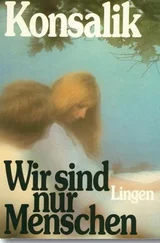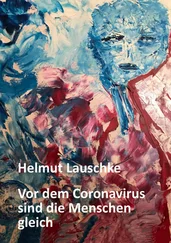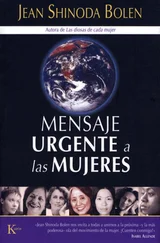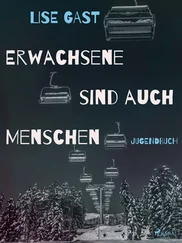Malraux’s Professor Hoffman describes hydrogen cyanide as a ‘perfect poison’ in an enclosed space: ‘the victim is seized with convulsions and falls dead in a tetanic rigor’. 32The SS first used Zyklon B to gas some six hundred Soviet prisoners of war at Birkenau. This gas, which was invented to kill vermin, was used with appalling efficiency as a means of mass murder. Among its many thousands of victims at Auschwitz were Fritz Haber’s own relatives.
Another scientist who worked with Haber on the Eastern Front judged the June attack ‘a complete success’. Otto Hahn described how initially a change in wind direction caused panic among the German troops. Unarmed, but wearing his gas mask (at this stage only members of Haber’s gas warfare unit had respirators), Hahn rallied the German soldiers and led the attack. ‘Not a single shot was fired,’ he recalled. Thanks to the gas they advanced nearly four miles. Like Vincent Berger, he saw ‘a considerable number of Russians poisoned by the gas’. According to Hahn, they ‘lay or crouched in a pitiable condition… I felt profoundly ashamed and perturbed. After all, I shared the guilt for this tragedy.’ 33
Before joining Haber’s chemical warfare unit, Hahn had fought on the Western Front. The chemist had been awarded the Iron Cross (2nd Class) for forming an impromptu machine gun unit with captured Belgian weapons. Called up at the start of the war, he had experienced the extraordinary Christmas of 1914, when English, French and German troops called a spontaneous truce and left their trenches to celebrate Christmas in no man’s land. Hahn later recalled how ‘The English gave us their good cigarettes, and those among us who had candied fruit gave them some. We sang songs together, and for the night of 24/25 December the war stopped.’ 34But by Boxing Day the unofficial truce had ended, and it was back to legalized murder.
As early as the 1880s, Friedrich Engels had predicted that Germany would wage a world war ‘of an extension and violence hitherto undreamt of’. It was the logical outcome of the ‘mutual outbidding in armaments’ in which nations were involved. He warned that the future would bring a massacre on an unprecedented scale. Tomorrow’s conflicts would be total wars. 35All the benefits of the modern industrial society – railways, telephones, aircraft – meant that war could now be waged faster and with ever more destructive weapons. Some thought that new technology would usher in an era of lightning wars. But they were wrong. Instead, new inventions such as machine guns and barbed wire favoured defenders, and in World War I, Engels’s prediction came true. Faced with the new technologies of war, Alfred von Schlieffen’s master plan for a rapid conquest of France quickly fell apart, and in its place a network of defensive trenches spread from Belgium to Switzerland. Within weeks Europe was transformed into a ‘mausoleum of mud’. 36
While recuperating behind the lines, Hahn was told to report to Fritz Haber at a Brussels hotel. The two chemists already knew each other. The 34-year-old Hahn worked at the Kaiser Wilhelm Institute for Chemistry, next door to Haber’s Institute in Dahlem, conducting research into radium and radioactivity. Hahn knocked on Haber’s hotel door at noon, and was surprised to find the eminent professor still lying in bed. ‘From his bed he gave me a lecture’, Hahn recalled, ‘about how the war had now become frozen in place and that the fronts were immobile.’ 37Haber told him that what was needed to break the stalemate was the introduction of ‘new weapons’. He intended to use chlorine gas clouds to force the enemy out of their trenches. Hahn pointed out that this would be in breach of the Hague Peace Conferences of 1899 and 1907, which banned ‘poison or poisoned weapons’. 38Such an attack would be universally condemned, he predicted. Haber did not disagree, but he argued, somewhat disingenuously, that as the French had already used tear-gas grenades, Germany would not be the first to use gas weapons. More importantly, he said, it was an opportunity to bring the war to a speedy conclusion: ‘countless lives’ could be saved. 39
Hahn was convinced, and joined Haber’s gas warfare unit, initially code-named the ‘decontamination unit’, but known later as the Pioneer Regiment. Other scientists who were recruited included James Franck and Gustav Hertz, both of whom later won Nobel prizes, as did Hahn. Hans Geiger, who invented the radiation counter that bears his name, also worked on chemical weapons during World War I. Hahn’s colleague Lise Meitner supported his decision to work on chemical weapons, telling him in March 1915 that lives would be saved if a winning weapon could be invented. And in any case, she said, ‘if you don’t do it someone else will’. 40Such reasoning would lead eventually to the alliance of scientists and generals that became a feature of the cold-war arms race.
Some scientists did resist, however. The physicist Max Born ‘hated the idea of chemical warfare and… refused to take any part in it.’ He even ‘broke off all personal relations with Haber’ and chose to work instead on aircraft radios. 41A former colleague of Haber, the chemist Hermann Staudinger, asked the Red Cross to condemn the use of chemical weapons. Haber angrily attacked him as unpatriotic. 42But such principled scientists were in the minority. As Haber’s biographer, Margit Szöllösi-Janze, says, there is no doubt that, like Haber, most scientists were ‘fascinated’ by the possibility of applying science to war. They were eager to take part. 43
At just after 5 p.m. on Thursday 22 April 1915, another German artillery barrage began. High-explosive shells rained down on the French Algerian troops dug in around Langemarck near the ancient Belgian market town of Ypres. Those brave enough to poke their heads above their trenches, saw a strange cloud drifting slowly towards them across the shell-pocked no man’s land. At first the cloud looked white, but as it approached it became thicker and turned a sulphurous yellow-green colour. Carried on the light north-easterly breeze, it moved at about a foot a second, never rising much above the height of a man.
Some soldiers had stripped to the waist in the warm weather. Now they watched curiously as the cloud drew nearer. They were not especially alarmed, having no idea what it was. The cloud crept towards them like an eerie sea mist. The opposing front-line trenches were close here, just fifty yards apart at some points, and the cloud soon reached the first French soldiers. Chlorine gas is twice as dense as air. When it reached the parapets of the French trenches, it rolled down on top of the men like a slow waterfall. It was then the soldiers realized that they were being attacked by a new and deadly weapon.
Samuel Auld, a British chemistry professor, saw the attack. He described the reaction of the soldiers: ‘First wonder, then fear; then, as the first fringes of the cloud enveloped them and left them choking and agonized in the fight for breath – panic. Those who could move broke and ran, trying, generally in vain, to outstrip the cloud which followed inexorably after them.’ 44
Initially they felt ‘an intense pricking in the nasal passages and also in the throat’. 45But then, as they inhaled more, it felt as though their eyes, nose and throat were on fire. Uncontrollable spasms of coughing racked their bodies. Chlorine kills by destroying the lining of the lungs. As the lungs become inflamed, fluid builds up, frothing out of the victim’s mouth. According to one man who was gassed by chlorine, it felt as though his chest was filling up with soap bubbles. 46There follows a slow, terrible death, in which the victim drowns in his own liquefied lungs. The poet Wilfred Owen, who was killed in action in 1918, describes the horror of a gas attack:
Читать дальше












